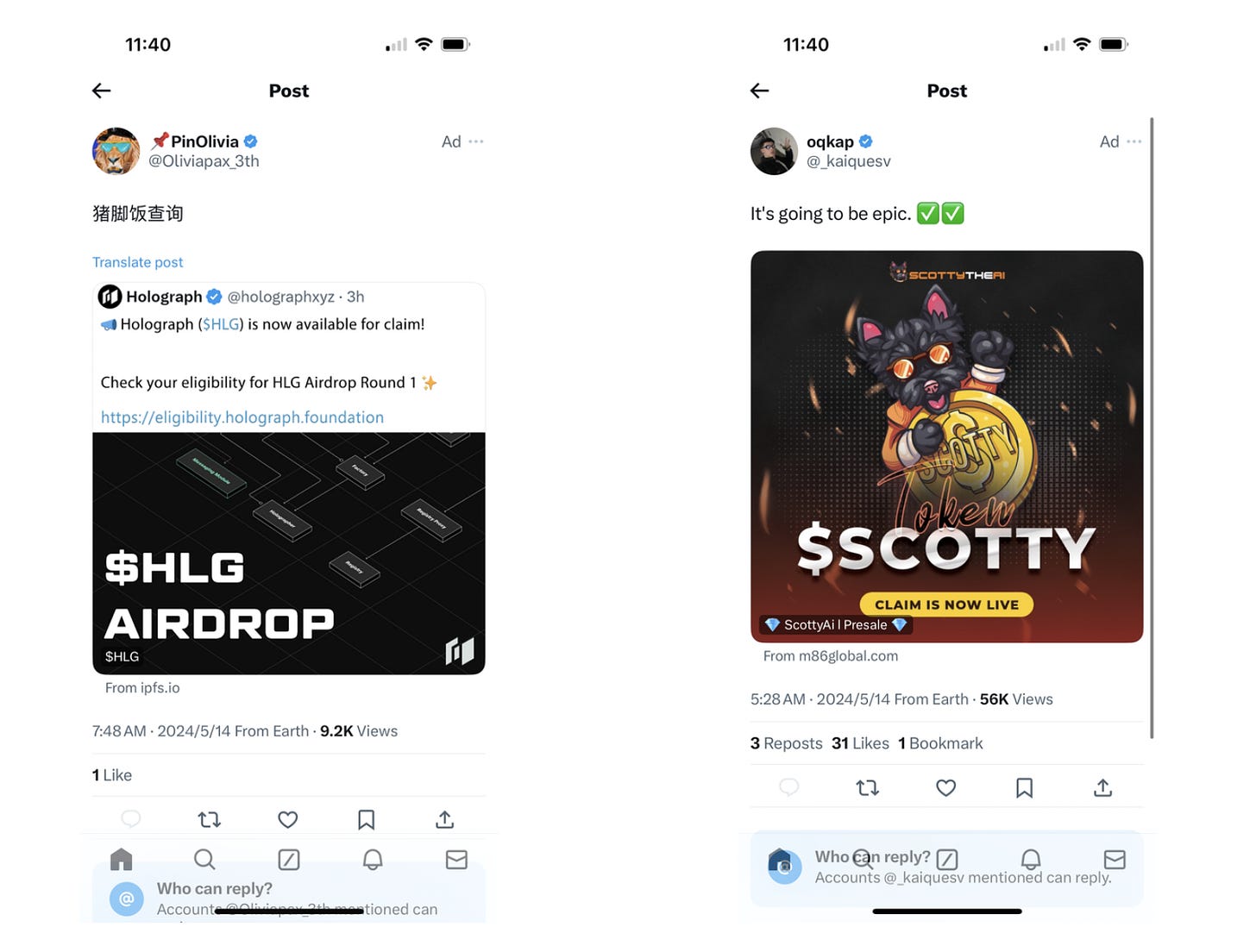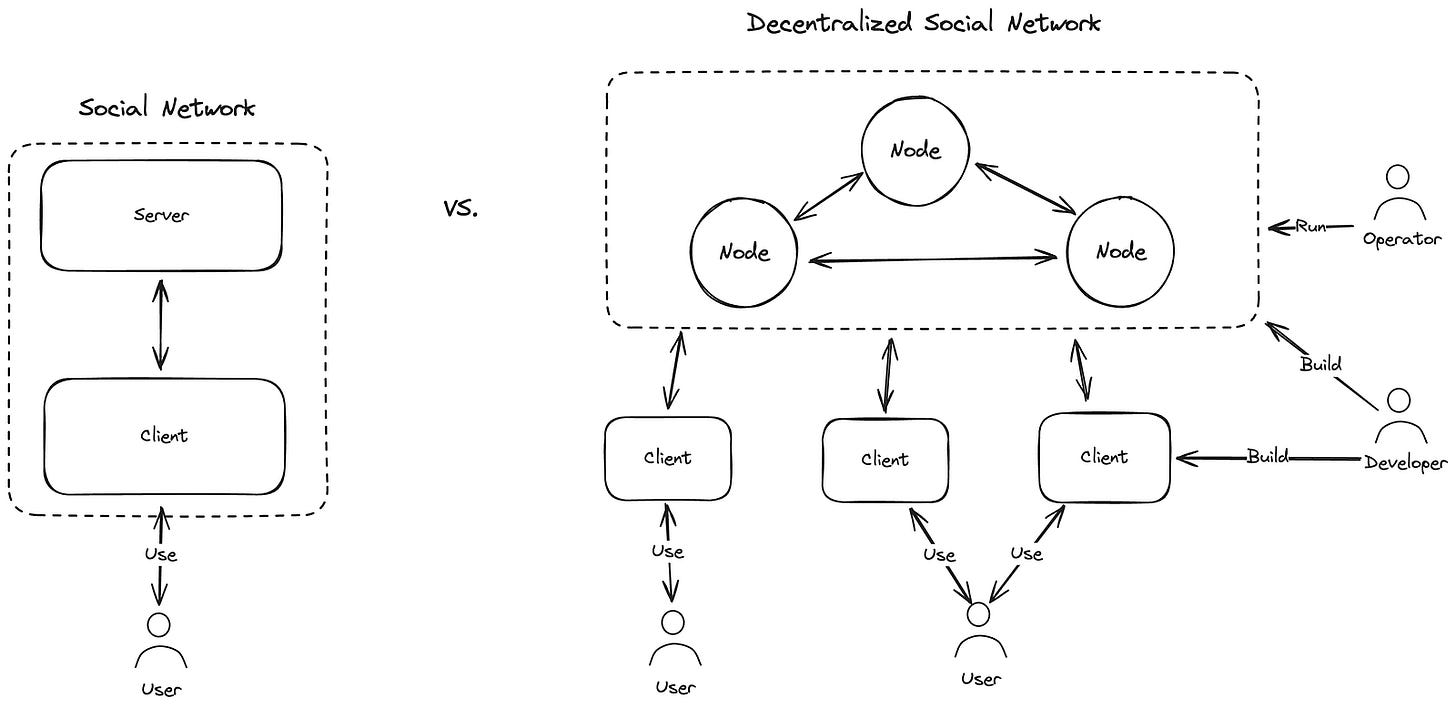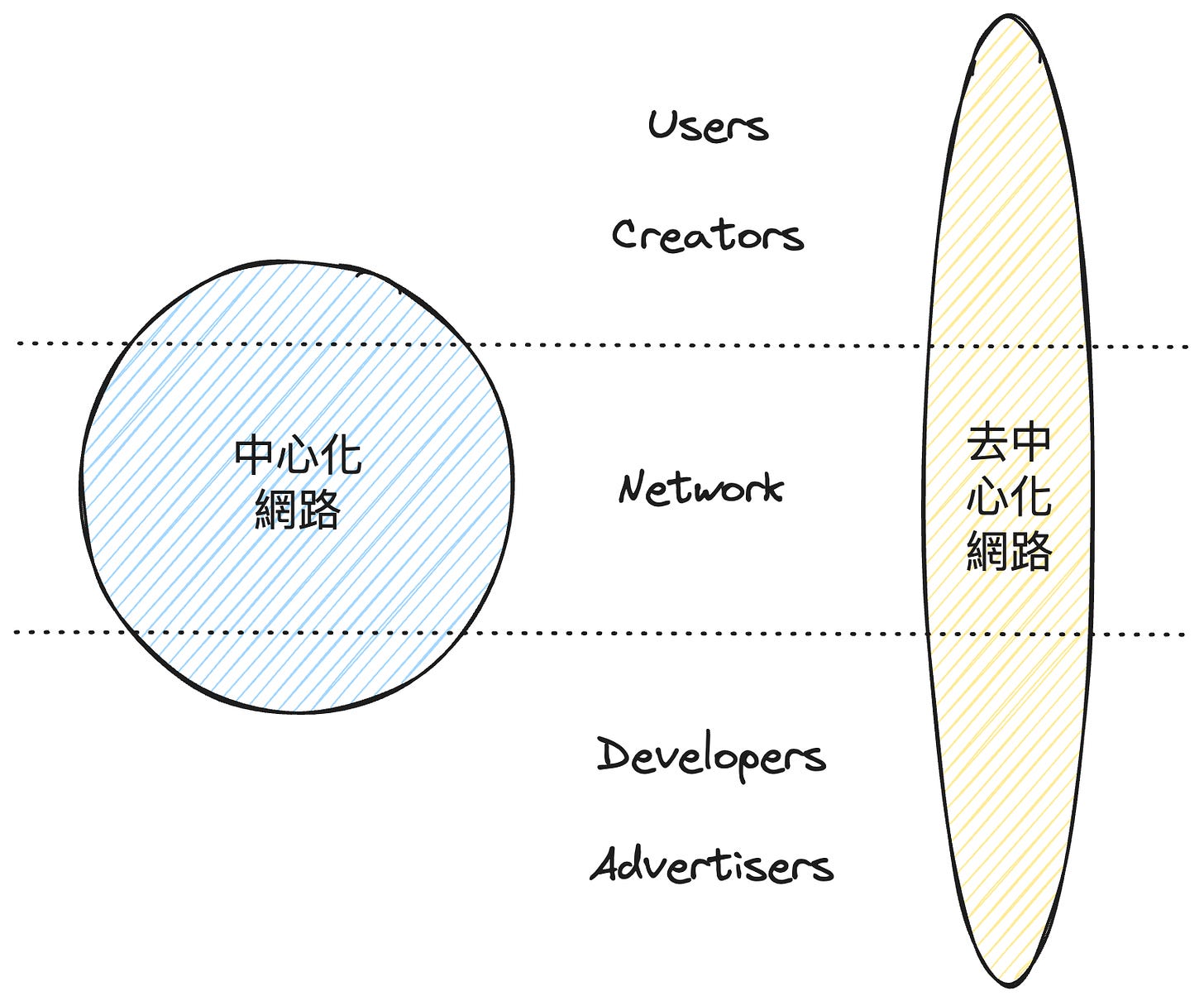Breaking the Monopoly: Decentralized Social Networks
Squeezing the Social Network Balloon

The Importance of Social Networks
Social networks are a crucial application of Web 2.0, transforming human interaction, communication, and behavior. People use social networks to understand and voice their opinions about the world. Social networks serve as the interface for human interaction, and the design of this interface significantly impacts how people interact. For example, Facebook’s invention of the “Like” button rewards users for their posts, giving them satisfaction and encouraging more content creation [1]. Similarly, Instagram popularized image-centric posts, and Twitter’s 140-character limit changed how people interact online.
What are the Problems with Social Networks?
Addictive Algorithm
Many social networks provide a dynamic feed, with content determined by algorithms. These algorithms study your online behavior to keep you engaged and sell your attention to advertisers. While the algorithms aim to please you, they often cater to the worst parts of your brain, known as the “lizard brain” [2]. This focus on engagement can lead to negative mental health effects, similar to overconsumption of junk food, alcohol, or tobacco.
For instance, my experience with Threads shows that its default algorithm, “For You,” recommends scantily clad selfies, cryptocurrency investments, and tech industry salaries—content that is engaging but ultimately leaves me feeling empty and anxious.

High Take Rate
Most social networks like Meta and Twitter rely on advertising as their primary business model. They attract advertisers with their vast user data, allowing for targeted ads. However, content creators who spend significant time on these platforms rarely receive fair compensation.
Chris Dixon from a16z explains the concept of the “Take Rate” in the book Read, Write, Own:
The percentage of revenue passing through a network that the network owner takes for itself, as opposed to passing on to network paricipants, is, as you’ll recall the network’s take rate.
Most social networks have a take rate close to 99%! For example, Meta’s 2024 Q1 earnings report shows $36 billion in revenue, with substantial profits not shared with content creators or users.
Moreover, platforms like Facebook and Twitter are filled with low-quality and scam ads. While they rigorously review content, they seem ineffective against scam ads, raising questions about their intentions.

Vulnerable to Censorship
Content moderation is necessary to prevent harmful interactions, especially with the ease of anonymity on social networks. According to Meta’s Quarterly Adversarial Report Q2 2023, they removed 7,704 accounts from China for violating their policies [3]. However, this power can be abused. For instance, Meta has apologized for blocking pro-Palestinian content [4].
Facebook has evolved from a college networking site to a vast communication channel, even between governments and countries. Meta’s content moderation power has become too powerful, raising concerns about who oversees Meta’s use of this power.
Low Interoperability
Many social networks offer APIs for developers, but these APIs are limited, frequently changed, and often require fees. Twitter, for example, once provided free API access but introduced a paywall after Elon Musk’s acquisition, forcing many third-party clients to shut down and disrupting academic research . Centralized APIs pose similar issues, making it challenging for developers to innovate as their work can become worthless if the API changes or is closed.
What is a Decentralized Social Network (DeSoc)?
A solution to these problems is developing a new social network with better moderation, business models, algorithms, and open APIs. However, as platforms grow, they face pressures from investors and regulators, forcing changes.
Alternatively, social networks could become open protocols. Anyone could participate in the network through established rules, with nodes storing parts or all of the network data. Developers could create various clients to interact with these nodes, and users could choose their preferred clients, all of which would be interoperable. This is the concept of decentralized social networks (DeSoc).

For example, email protocol SMTP allows developers to build email servers and clients like Google Gmail and Microsoft Outlook, enabling users to send and receive emails across different clients.
How Can Decentralized Social Networks Improve These Issues?
Decentralized social networks don’t directly solve existing social network problems but decentralize control, allowing developers to freely develop applications and giving users more choices.
- As a developer, I can join the network to create various clients and algorithms, freeing users from a single algorithm’s grip. I can use various business models, including ads, but users can switch to other clients if I allow scam ads.
- As a user, I can choose my preferred client based on experience, algorithms, or pricing. If one client blocks my content, it’s still on the network and accessible through other clients.
- As the network initiator, I no longer monopolize user data or the only client, reducing my revenue compared to traditional social networks but also lowering my operational, development, and marketing costs to network participants.
Several decentralized social networks are already in development, such as ActivityPub, BlueSky, Lens Protocol, and Farcaster. These networks differ in rules and system architecture, performance, costs, and interoperability. Farcaster, for example, uses blockchain for main user states and a distributed system for social content, providing high interoperability, low costs, and good performance.
Squeezing the Social Network Balloon
Chris Dixon introduces another concept, “Squeeze the Balloon,” where commoditizing or offering a tech stack layer for free shifts revenue to other layers. For example, Google’s free Android OS and Chrome browser make it hard for competitors to profit in these areas, allowing Google to earn more from its search engine.

Decentralized networks typically have much lower take rates due to the absence of a central company charging fees, open-source code scrutiny, and the potential for forks. Thus, decentralized social networks redistribute the high profits of traditional social networks to users, creators, developers, and even advertisers. This vision is gradually becoming a reality.
References
- 「a click of the “Like” button provides a variable reward for the content’s creators. “Likes” and comments offer tribal validation for those who shared the content, and provide variable rewards that motivate them to continue posting.」 — Nir Eyal, Hooked
- 『The problem is that the version of us that they serve is the basest version of ourselves. They skip past our values, aspirations, and even our conscious thought, and go straight to pressing the buttons in our lizard brain.』 — Chris Best, An algorithm for quality
- 『We removed 7,704 Facebook accounts, 954 Pages, 15 Groups and 15 Instagram accounts for violating our policy against coordinated inauthentic behavior. This network originated in China and targeted many regions around the world, including Taiwan, the United States, Australia, the United Kingdom, Japan, and global Chinese-speaking audiences.』 — Meta, Meta’s Adversarial Threat Report, Second Quarter 2023
- 『Senior Facebook executives apologized to the Palestinian Prime Minister Mohammad Shtayyeh in a virtual meeting on Tuesday, after officials complained to the company about Palestinian posts being blocked amid the conflict with Israel, according to a diplomat who facilitated the meeting.』 — TIME, Inside Facebook’s Meeting With Palestinian Officials Over Posts Inaccurately Flagged as Incitement to Violence